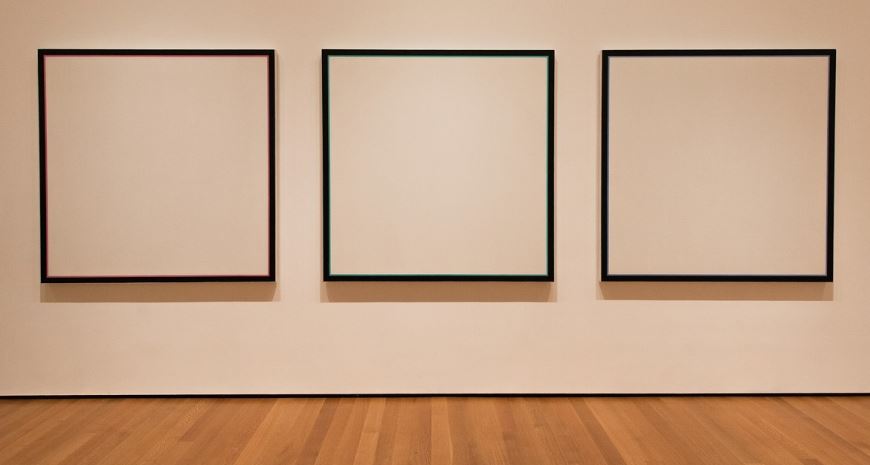You might think that collecting art like paintings, sculptures or photographs is something that’s reserved for the elite. However, the art world is becoming increasingly accessible, even debutants in the art world are taking up art collecting. You may be wondering how to start an art collection of your own. Artalistic’s team of experts will provide you with a few key tips in this mini guide for beginners in the world of art buying.
Buying fine art: how to start collecting art for beginners
How to research and buy art
Finding places where you can buy fine art is easy. Doing a little research on the web is a great first step. You can also visit artist studios, galleries and exhibition spaces. There's bound to be a location like this near you. Another option is to go to an art auction, although this is not the most affordable option and requires a little experience.
Today, the easiest and most effective way to find pieces is to browse an online gallery that specializes in buying and selling art. You can even do this from the comfort of your own home. There are countless virtual galleries, but the hardest part is selecting a reliable website that guarantees secure transactions and provides you with personalized services. Unfortunately, reliable websites are few and far between. Only a handful of them are known for being completely transparent about their purchasing and selling process. If you search "Buy art online" in Google a few trustworthy websites will come up. Rest assured, if you're on this website, you've come to the right place!
Know how to evaluate a work of art’s quality
When starting an art collection, the most important thing to do is assess the work of art’s quality. Unfortunately, there’s not one specific way to evaluate art. At the beginning of your art collecting journey, the only way to avoid making a mistake is to be accompanied by an expert or a professional.
Over time, as your knowledge increases, you will be able to assess a painting, sculpture or photograph’s quality. Using a website that’s renowned for providing quality services is one of the best guarantees that you will be getting good service. Well-known sites are very rigorous when it comes to selecting the pieces they display.
Another important point: it's important to choose quality over quantity. Buying art and starting a collection takes time. It's a long process.
Buying fine art and establishing a budget
You can throw the idea that buying art is only for the elite class out of the window. It's a cliché about contemporary art that simply isn’t true. Today, buying art is much more accessible. You can easily buy fine art for a few hundred euros, depending on the budget you have set aside for starting your collection.
Keeping an eye out for good opportunities
Some works of art are more affordable than others. For example, purchasing limited editions of paintings, drawings or printmaking pieces is a good way of investing in art. The fact that they are part of a numbered edition that makes up a limited release gives them more value.
Another way to start an art collection is to keep your eye on emerging artists whose work is often sold for less money. Who knows, as time goes by and an artist becomes more popular their work will increase in value.
Take an interest, evolve, progress
We really can’t repeat it enough: knowing how to buy fine art is a skill that must be learned over time. You'll be surprised by how quickly you familiarize yourself with the art world. With practice and once you’ve trained your eye, you'll acquire skills that will help you make steady progress. It will become easier to buy art that will bring you a return on your investment as you learn.
Be sure to stay in-the-know when it comes to the latest trends in art. Following emerging artists as their careers evolve could be a good way to do this.
The annual Hiscox report is an excellent source of information about the online art market that summarizes the major developments in the contemporary art market on the web. We create a yearly blog article that breaks down this report to help simplify your art investing journey.
Displaying and protecting your art
Managing your collection properly should not be taken lightly. Creating a proper inventory system when you buy art is important – keep track of the name of the piece, artist, date of purchase, price, invoice, certificate of authenticity, detailed description of the piece, etc. Storing and conservation is also a key factor, especially if you want to resell the piece in the future. If you are interested in more in-depth information about this subject, feel free to read our blog article.
Buying art and protecting it
For high-value works of art, there's also the question of insurance. It's up to you to weigh the pros and cons of getting an insurance policy (damage, theft, etc.).
All materials are susceptible to fluctuations in humidity and temperature or being bumped or broken. Light and dust are not good for works of art. You'll need to display your piece in a space with little natural light and maintain a clean exhibition space.
We hope that you’ve enjoyed our art-buying guide for beginners to the world of art collecting. If you are looking for more in-depth information about investing in art – check you the following article on buying art. If you have any further questions, please feel free to contact our team. We will be more than happy to provide you with personalized advice. You can also browse our virtual galleries, where you'll find paintings, sculptures, drawings, photographs and limited edition prints by well-established and emerging artists alike. Investing in fine art through Artalistic is a sure way to start curating a good collection!
 English
English Français
Français


You must be logged in to post a comment.
Click here to log in